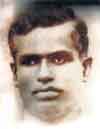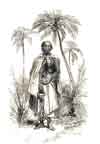The Great Sage of Sinhale
On July 25, 1887, in the village of Indigasaara in Dikwella, 12 miles to the east of Matara, was born Munidasa Cumaratunga - one of the most eminent scholars Sri Lanka has known for several centuries. Born into a family of an ayurvedic physician, he was the 12th out of 13 children. He achieved fame through his profound knowledge of the Sinhala language and firm conviction of the need to develop the language to promote creative thinking. He started life as a trained teacher and was attached to the Kadugannawa bilingual school from 1907-17. He then served as an Inspector of Schools after which he was Principal of teacher training colleges at Nittambuwa and Balapitiya. He was most concerned with the plight of the Sinhalese teacher during his career in the Education Department. He became totally involved as a man of letters during the two-decade period from 1922-43. Turning his attention to classical Sinhala literature, he re-interpreted most of the classics and edited a number of old texts during this period. These totaled at least 69 and in addition he wrote several books on his own. His original writings include poems, short stories, dramas and books on grammar including the interpretation of the verb. He also authored a book on poetics and music. His writings for the children have been highly appreciated. He wrote 20 children's books including the popular 'Hath Pana', Magul Kema and 'Heenseraya'. Most of these books guided the children on the correct usage of grammar. Excelling in writing verse for children, he taught them the alphabet in an interesting way through simple poems. Mal Bas created an interest in nature among the children. A fine example is the poem on the hare. The opening verse reads: Ha ha hari haava - Kele medin aava' The English version reads: Ha, ha little hare Cumaratunga was well versed in Sinhala, Pali and Sanskrit and was also proficient in Tamil and Malyalam as well as English, Latin and Greek. He served as editor of 'Lakmini Pahana,’ the influential Sinhala newspaper from 1934-36. He died on March 2 1944. Cumaratunga's followers formed themselves into Hela Havulas or Purist Groups in 1940. It was a movement in favour of a 'pure' Sinhala language. These are active even today.
Uprising in 1848 leads to martial law
The last week of July in 1848 was a significant one. Following the imposition of new taxes, the 'Rebellion of 1848' began in Dambulla when people gathered under the leadership of Gongalegoda Banda who pretended to be a descendant of King Rajasinghe. He was crowned on July 26. Two days later, the mob reached Matale town and plundered the town. They continued towards Wariyapola where a detachment of European and Malay soldiers drove them back. Martial law (army taking over civil government) was declared in the Kandy district on July 29 and the British administration made arrangements to get down soldiers from Madras. In a week the troops arrived in Trincomalee and marched towards Kandy. It took them three months to end the rebellion. An inquiry in the British Parliament resulted in Governor Lord Torrington having to resign while the Colonial Secretary, Sir James Emerson Tenant (author of several books on Ceylon) was given an appointment in another country. Referring to the new taxes imposed by Governor Torrington, historian L.E. Blaze writes: "In 1848 several new taxes were imposed - taxes on dogs, on guns, on boats, the stamp tax and the roads tax. These were strongly resented for various reasons and a rising (which after all scarcely deserves the name 'Rebellion') took place in Kandy, Kurunegala and a few other places. The road tax was the most hateful of the new taxes. Every male in the island between eighteen and sixty years of age (except the governor, the military and certain others) was required to give six days labour on the public roads or to pay three shillings instead. The Kandyans did not care for roads and thought (wrongly, no doubt) that the tax was for the benefit of the Europeans alone.”
|
||||||
Copyright © 2006 Wijeya Newspapers
Ltd. All rights reserved. |

